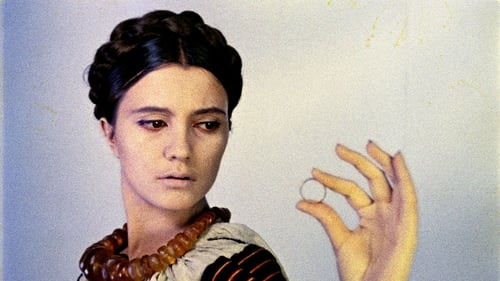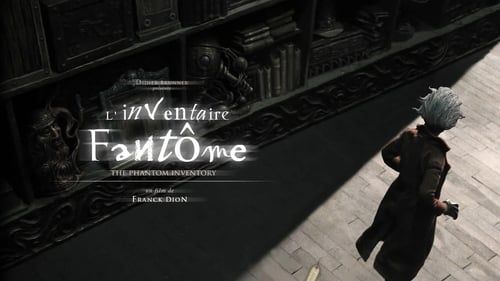Boogie-Doodle (1940)
Género : Animación
Tiempo de ejecución : 4M
Director : Norman McLaren
Sinopsis
An animation film, made without the use of a camera, in which "boogie" played by Albert Ammons and "doodle" drawn by Norman McLaren combine to make a rhythmic, brightly colored film experiment. The main title is in eight languages.

An experiment in pure design by film artists Norman McLaren and Evelyn Lambart. Lines, ruled directly on film, move with precision and grace against a background of changing colors, in response to music specially composed for the films.

Animation featuring dancing black and white shadows.

A color cocktail by Norman McLaren and Evelyn Lambart, translating into moving patterns of color and light the moods of music written for a jazz ensemble by Eldon Rathburn. Inscribed and colored directly on film.

An animated film drawn entirely in pastels. Various fantastical plant-like things "grow" from the ground, eventually launching five spheres. The spheres drift in space while changing shapes and come back down to another setting, which eventually becomes more fantastical and symbolic than the opening one. The soundtrack has a jazz slant, with an ensemble of four saxophones and synthetic sound (i.e. sound created by drawing directly on the soundtrack).

To the tune of a classic French-Canadian nonsense song, surreal blackbird made of lines loses body parts and gets them back threefold.

Norman McLaren attempts to give the opening speech for the first Montreal International Film Festival, but his microphone won't cooperate.

In this short film by Norman McLaren, dancers enact the Greek tragedy of Narcissus, the beautiful youth whose excessive self-love condemned him to a trapped existence. Skilfully merging film, dance and music, the film is a compendium of the techniques McLaren acquired over a lifetime of experimentation.

A man sets a ping-pong ball into motion and it becomes fruitful and multiplies.

An animated film compiled by David Ehrlich consisting of 27 animators from different countries all explaining themselves through their animation.

An abstract animation by Norman McLaren, who was born in Scotland in 1914. His interest in filmmaking began early in life after he became acquainted with works by the great Russian filmmakers Eisenstein and Pudovkin and the German animator Oskar Fischinger.

A dos niños, que son músicos ambulantes, les roban accidentalmente un acordeón. Rodada en Teherán, forma parte del proyecto "Then and Now", sobre la tolerancia y la complejidad de las culturas. En palabras de Pahani, "soy un director que tiene muy en cuenta las circunstancias sociales y lo que ocurre a mi alrededor. Por ello, tal vez "The Accordion" refleja mis emociones frente a lo que sucede y expresa mi manera de ver la realidad". (FILMAFFINITY)

By the start of World War II, Paul Robeson had given up his lucrative mainstream work to participate in more socially progressive film and stage productions. Robeson committed his support to Paul Strand and Leo Hurwitz’s political semidocumentary Native Land. With Robeson’s narration and songs, this beautifully shot and edited film exposes violations of Americans’ civil liberties and is a call to action for exploited workers around the country. Scarcely shown since its debut, Native Land represents Robeson’s shift from narrative cinema to the leftist documentaries that would define the final chapter of his controversial film career.

P´tite Lili es un cortometraje francés dirigido por Alberto Cavalcanti en 1927. Se trata de una ilustración visual de una canción, La Dama de grava y Benech Lilie, con música para la versión en audio de 1930 por Darius Milhaud. Sólo hay una copia original de esta trágica historia e impresionista. La película cuenta la historia de Lili (la señora Catherine Hessling), huérfana de 16 años que ha perdido a toda su familia, pero ha conservado su pureza e inocencia. Por desgracia, un terrible destino le espera a esta niña optimista: en los barrios bajos de París se reunirá con un hombre que la llevará a ejercer la prostitución.

The film is a day in the life that passes by, even if it seems neverending. In the morning the streets are alive with people, pedestrians and cars, with loud and exultant noise. Such sounds accompany the restless walk of a woman and her child across a dusty street, while Bartas’ gaze wanders through many different perspectives.

This publicity clip for Canada Post is Norman McLaren's first film for the NFB. For this animated short, McLaren drew symbols by pen onto clear 35 mm stock, which was then superimposed on a photographed painted background. Benny Goodman's rendition of Jingle Bells provides the accompaniment. (NFB)

This remarkable companion piece to In the City of Sylvia offers a compendium of images recorded by Guerín in Strasbourg while searching for the traces of a (fictional?) brief encounter some years earlier with a young woman named Sylvia.

Perrault's fairy tale presented in claymation with choral voices. Bluebeard goes courting, all six of his wives having died. He arrives at the house of a widow with two daughters. He's greatly feared, but he overcomes objections with a generous dowry. One sister (Anne) refuses him; the other accepts. At his castle, the damsel delights in precious minutes away from Bluebeard in the rose garden. The Saracens declare war; Bluebeard goes off to fight them, leaving the keys to the castle in the damsel's hands. He warns her not to enter the forbidden room. As war rages, she discovers riches in the castle and then enters the forbidden room. Will Bluebeard discover her act? Can she escape death?

Parajanov's collage of all the footage that remained from his film "Kyiv Frescoes," which was halted by the authorities who demanded that all the negatives be destroyed.

The film is about a very stern looking man who has come to a very unusual flat to repossess the belongings of an old man in a wheelchair. However, again and again, the home seems to play tricks on the guy--driving him half-mad in the process.

A humorous survey of the history of the development of transportation technology in Canada.





